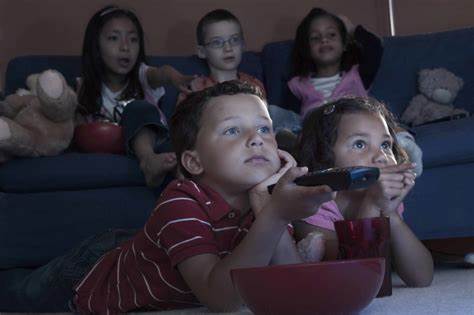Television has become an integral part of our daily lives, and it’s no different for our children. However, not all TV content is suitable for young eyes and ears. As parents, it’s our responsibility to guide our children’s TV channel choices, ensuring they watch programs that are not only entertaining but also educational and age-appropriate. In this article, we provide a roadmap for parents on how to make informed decisions about what their children watch.
Understand the Importance of Channel Selection
- Media Influence: Television plays a significant role in shaping a child’s worldview, values, and behavior.
- Learning Opportunities: By choosing the right channels, you can harness TV as an educational tool.
Pre-Select Channels for Your Child
- Child-Friendly Channels: Identify channels designed specifically for children, such as Cartoon Network, Disney Junior, and PBS Kids.
- Age-Appropriate Content: Ensure the content is suitable for your child’s age group.
Explore Educational Channels
- Learning While Watching: Channels like National Geographic Kids and Discovery Kids offer educational content that engages children’s curiosity.
- Age-Appropriate Information: These channels often provide content tailored to different age groups.

Set Parental Controls
- Password Protection: Use parental control features provided by your TV service provider to restrict access to certain channels.
- Age Ratings: Set age-appropriate content restrictions based on your child’s age.
Preview Shows in Advance
- Pre-Screening: Watch programs before allowing your child to view them. This helps you gauge their suitability.
- Discussion: Pre-screening also allows you to discuss the content with your child, explaining any challenging or educational aspects.
Encourage Interactivity
- Interactive Shows: Some channels, like Nickelodeon, have interactive shows that engage children actively.
- Learning Apps: Utilize TV-based learning apps that complement the programs your child watches.
Use TV Guides
- TV Listings: TV guides often provide information about program content, making it easier to select appropriate shows.
- Schedule Viewing: Plan TV time based on the shows your child wants to watch and their school or play schedule.
Be Mindful of Commercials
- Ad Content: Be aware of the commercials aired during children’s programs. Some may promote age-inappropriate products.
- Teach Critical Thinking: Encourage your child to think critically about ads and their persuasive techniques.
Encourage Variety
- Diverse Content: Encourage your child to explore different types of programs, from cartoons to documentaries.
- Broaden Interests: Exposure to a variety of subjects can help your child discover new interests.
Monitor Screen Time
- Balanced Approach: Set limits on TV time, ensuring it doesn’t overshadow other activities like play, reading, and homework.
- Quality Over Quantity: Focus on the quality of screen time rather than the quantity.
Lead by Example
- Screen Time Rules: Practice the same rules you set for your child regarding TV viewing.
- Co-Viewing: Watch programs together, fostering discussions about what you’ve seen.
Open Communication
- Ask for Feedback: Encourage your child to share their thoughts on the shows they watch.
- Address Concerns: If your child encounters something unsettling on TV, create a safe space for them to discuss it.
Stay Informed
- Content Changes: Keep an eye on the programs your child enjoys; TV schedules and content can change.
- Read Reviews: Consider reading reviews of popular children’s shows to gain insights into their suitability.
Be Flexible
- Evolve with Age: As your child grows, their interests and understanding will change. Adjust your TV choices accordingly.
- Encourage Independence: Allow older children some input into their TV selections, within boundaries.
Promote Alternative Activities
- Outdoor Play: Encourage physical activities and outdoor play to balance screen time.
- Reading Time: Dedicate time to reading together, fostering a love for books.
Conclusion
Guiding your children’s TV channel choices requires vigilance, but it’s an essential aspect of responsible parenting in the digital age. By understanding the importance of channel selection, utilizing parental controls, and fostering open communication, you can create a balanced and enriching TV experience for your child. Remember, it’s not just about what they watch but how they watch and what they learn from it.

